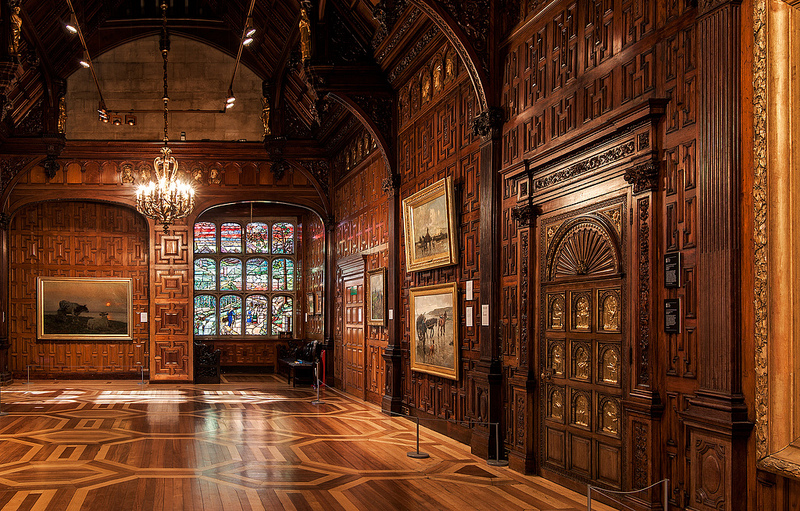My problem with a visit to London is that it is never long enough! There is always another exhibition that beckons or a concert that demands to be heard. Nonetheless, there is a distinct delirium in the dizzying number of art exhibitions that I managed to see. There is always the vast diversity of size and type of exhibition from which to choose. The huge and fascinating "Inventing Impressionism: Paul Durand-Ruel and the Modern Art Market" at the National Gallery is currently one extreme. The other is a really interesting and diverse small exhibition, "Cotton to Gold: Extraordinary Collections of the Industrial North West".
This show, "Cotton to Gold" was a delight from beginning to end, not least because of where it is exhibited. Two Temple Place is a relatively new exhibition venue, along the Victoria Embankment, on the Thames, in front of the amazing Law Courts complex. A small but seriously over the top neo-Gothic building, it was built as an office for the first Viscount Astor, William Waldorf, in the 1890s. Lavish beyond belief in details and embellishments, it was a statement of power and wealth seldom equalled today. The building alone, now the home of The Bulldog Trust, is well worth a visit, quite apart from any exhibition put on during the winter months.
"Cotton to Gold" was a show curated from the collections of three small museums in the British North West, collections that had been donated by very wealthy private citizens in the late 19th/early 20th century. These men had made their money in Lancashire's booming textile industry. Not only did they collect with a passion, but they were also serious local philanthropists, supporting social and cultural institutions.
The collections from which this show was curated ranged hugely. Early icons from Greece, Russia and the Eastern Mediterranean; Greek and Roman coins; superb Japanese ukiyo-e prints (pictures of the floating world); cuneiform tablets, manuscripts and books that traced the history of writing from 4000 years ago until the 20th century; carved ivories, J.M.W. Turner watercolours; John Everett Millais' life drawings; work from the largest public collection of Tiffany glass in Europe; even beetles and Peruvian funerary objects. It was a mind-stretching but really fascinating selection. There was something to interest everyone, in essence.
Some of the early illuminated manuscripts collected by Robert Edward Hart were exquisite, while others from 15th or 18th century Persia fascinated by their elegance.
Early printed books showed the straddle between printing and hand illustrations, then printing predominated completely. There were early copies of names that resonate - Chaucer, Shakespeare, Milton, Montaigne or Swift. It made one stretch back into one's early education, a rather humbling affair!
This exhibition reminded me that an exhibition conceived on a very human scale and with such a diversity of content is often unusual today. Nonetheless, it was a delicious and memorable set of collections woven together for everyone's delight. The exhibition runs until 19th April, 2015 - well worth a saunter along the Victoria Embankment beneath the huge plane trees until you reach Two Temple Place.








